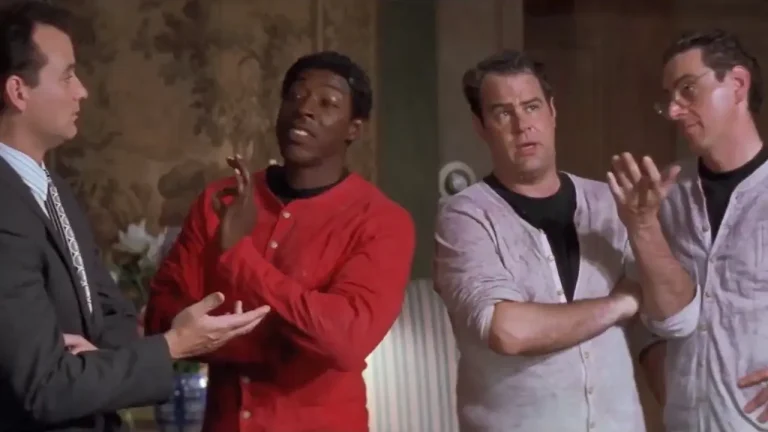Who Is Your Organization?
Author Michael Lewis shows you how to spotlight the essential but unsung people in your business
When I was running the newsroom at Northwestern’s Medill School, I’d begin every quarter by assigning my graduate journalism students beats around Chicago: police and fire, housing, City Hall, arts and culture, we had it covered.
The students would be filing stories on deadline for newspapers in the region, so to help them prepare, I asked them to write a “beat report” ― a short description of their coverage area, the movers and shakers, the top issues and a list of story ideas.
But the toughest part of the assignment was also the simplest: Tell me about someone I should know.
Not the public officials or leaders, but someone inside a department or agency who does an important job no one’s ever heard about ― but should.
That’s the subject of Michael Lewis’s new book, “Who is Government? The Untold Story of Public Service,” a series of essays from Lewis and other writers. (Lewis’s other credits include “The Big Short” and “Moneyball.”)
Make things go
Profiles make great stories. But too often, we write about people who already enjoy some level of recognition: new executive hires, C-suite promotions and industry award winners.
And that’s fine as far as it goes. But every organization has people ― lots of them, as it turns out ― who make the enterprise run and get very little credit for its success.
They are accountants, utility line workers, scientists and technologists. They are unsung, unheralded and largely unknown. Tell the stories of those people, and you tell the story of your organization.
This isn’t as easy as it sounds. It requires reporting; you must dig deeper, below that first layer, to find these people and discover their stories. And you may have to overcome a few obstacles that stand in your way, namely time, access and approvals. Here’s how Lewis describes his reporting on the federal government:
Our government ― as opposed to our elected officials ― has no talent for telling its own story. On top of every federal agency sit political operatives whose job is not to reveal and explain the good work happening beneath them but to prevent any of their employees from embarrassing the president. The PR wing of the federal government isn’t really allowed to play offense ― just a grinding prevent defense. And the sort of people who become civil servants ― the characters profiled in this book ― tend not to want or seek attention.
Organizations can be like that, too. Your PR folks want to tell the company story, but their approach is too often limited to the standard press release instead of a compelling story. They focus on the weak quote from an executive instead of the more captivating voice of a relatively unknown expert.
Internally, companies see recognition as a path to better employee engagement, but too often flub the storytelling by focusing more on an award than on the person and what they bring to the organization.
And in many cases, your profile subjects aren’t sure whether they can even share their stories, though not necessarily at the same level of paranoia as the federal government. Here’s Lewis:
Like the other federal bureaucrats I’ve written about, Heather Stone, and her function, were buried under six layers on an agency organizational chart. The agency in her case was the Food and Drug Administration, and her function was to help doctors find new treatments for rare, deadly diseases. . . She was shocked to be discovered and explained nervously that she was unable to speak with me without the permission of the agency’s communications team.
. . . As it turned out, Heather really wanted to answer my questions. It just took a few months for her to shed the layers on the org chart designed to keep her from doing it.
Your assignment
Try this with your news team. Send them out across the organization to bring back a story pitch about someone you don’t know. Here are a few types of people they can focus on:
- The Connectors. These are the people in the organization who seem to know everyone and what they do. They understand how the pieces work together ― or why they don’t.
- The Explainers. The work of your company can be complicated. But there are people who understand the technology, the science or the finance. Make them your go-to sources.
- The Number Crunchers. Businesses run on data. And inside those numbers are a pile of stories waiting to be told.
Here’s Lewis on Chris Mark of the Department of Labor, a former coal miner who led the development of standards to prevent the overhead layer of rock, called a roof, from collapsing in underground mines:
The Bureau of Mines also kept records of deadly roof failures along with important details: the mine’s depth, the size and shape of its pillars, the nature of the rock in the roof, and so on. Oddly, no one was really searching for meaning in the numbers. “They had all this data but weren’t doing much with it,” said Chris.
The phenomenon had also occurred in baseball and, I’d bet, in other fields, too. The impulse to collect data preceded the ability to make sense of it. People facing a complicated problem measure whatever they can easily measure. But the measurements by themselves don’t lead to understanding.
Lewis concludes his piece on Mark this way:
All he ever wanted to do was to find problems that were fixable. After all, roofs fell. Someone needed to help them stay up.
Jim Ylisela, co-founder of Ragan Consulting Group, wants to read about the unsung people in your organization. You can work with Jim and his fellow editors through RCG’s Build Better Writers program.
Contact our client team to learn more about how we can help you with your communications. Follow RCG on LinkedIn and subscribe to our weekly newsletter here.







